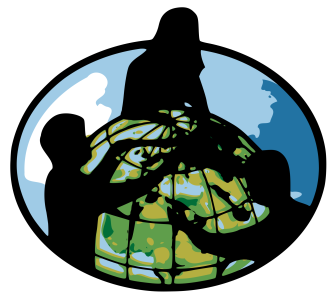I hadn’t expected it to be so hard.
If I’m honest, I hadn’t thought much about it at all. I had read The House on Mango Street so many times in high school that, when I decided to teach the book to my 7th graders, I put together a scope and sequence from memory.
That’s how “Red Clowns” snuck up on me.
At the school I worked in, we read texts aloud to our class. Reading Sandra Cisneros’s words up to that day had been a joy. My students and I had laughed together, I had gotten to share my Chicana culture with them, and we had made connections to what their experiences are like in Hawai’i. It had been a powerful process.
Then, I got to “Red Clowns,” in which the narrator, Esperanza, alludes to the fact that she has been sexually assaulted while waiting for her friend at a carnival.
When I read the opening lines, I felt my throat catch. Then, Esperanza says, “Sally, make him stop. I couldn’t make them go away. I couldn’t do anything but cry. I don’t remember. It was dark. I don’t remember. I don’t remember. Please don’t make me tell it all.”
Suddenly, I wasn’t playing Esperanza anymore, nor was I “Ms. Torres.” I was 19 years old, begging a counselor not to make me tell it all as I sobbed in her office.
My students were watching and listening attentively, but as I read, I began to flashback to difficult memories of my past that I would rather forget. They popped and crackled behind my eyelids like flashes from gunfire. It hit me right in the chest and, for a moment, I could not breathe.
Still, my kids were sitting there, and I knew that this story was starting a powerful and important discussion. So, I took a breath, collected myself, and continued reading.
Later that day, I noticed how sitting with that story affected my overall demeanor. I felt quieter and sadder. I always love my kids and my work, but that day was a little darker as I navigated the lifelong process of coming to terms with my own past.
That day, and each day since as an educator, has been difficult when I encounter these texts. I can’t imagine I’m alone though. 1 in 6 American women and 1 in 33 American men have been the victim of attempted or completed rape, according to RAINN. It is an unfortunate truth of American society that, inevitably, many people who educate children have been sexually assaulted in some way.
This leaves many of us in a difficult conundrum. As we enter a new era of accountability, of the #MeToo movement empowering women to share their stories and rally support to change the status quo, it is important we prepare students to have these discussions. It behooves us to prepare our children with age-appropriate understandings of what healthy relationships look like, how to have agency about their bodies, and difficult truths about consent in our society. We should prepare them for the future and support students who have seen and struggled with much more than any person should have to.
There are some important discussions about how we prepare students to talk about these topics. We can pre-assess them, we can provide trigger warnings and safe spaces for them to begin navigating their own paths. If we’re lucky, we can put them in contact with mental health services they might need.
Objectively, I believe it is essential to converse about these stories and ideas. There are some days, though, when opening up that discussion feels like opening up a new wound that I am unsure will be able to heal again.
What happens when we as teachers are triggered? What happens when the stories feel too hard to teach?
I put that question out online and got some thoughtful and powerful responses.
A few shared that teaching through these experiences can be a place of catharsis and healing. A history teacher in New York shared that “coming to terms with [what happened] myself before I shared it with others [is important.] ...Also, not sharing the whole story and having firm boundaries in place that I feel good about before it enters a classroom.” She continued, “Knowing I am not a victim, even if I was done wrong [is important.] ...Framing it in a narrative that is true, deep down to my soul, where these things are something that has happened to me, instead of defining me, and have undoubtedly made me stronger.”
Ursula Wolfe shared a fantastic piece about teaching The Color Purple in ReThinking Schools by Linda Christensen, Rethinking Schools editor and director of Oregon Writing Project. She shared some important and empowering insights:
I found that the more that I wrote about the experience, spoke about the experience, and found ways to help others navigate the experience, that it started to loosen the hold on me. I came to understand that what happened to me wasn't my fault. And being able to use my experience to help others freed me from the pain. When I went through the sexual and physical abuse, there were no shelters for women. I didn't know what to do. Running away was my only choice. ...But now, I introduce students to shelters for battered women and children. I have them in to speak. I give out cards. I talk about my experience. I teach novels that discuss the experience, and I attempt to let us heal in those spaces.
There’s no timeline for how long these stories stay with us (do they ever really leave?). Decades later, I still had to stop, pause, cry, and breathe as I wrote this piece itself. There is no right way to heal from the traumatic and difficult experiences so many of us have unfortunately encountered.
And for some, that might mean we never talk about it.
It may mean we take a breath, close our eyes, and get through the best we can. We can prepare our students to understand what they’re reading, reach out to our colleagues for support, bring in outside resources and connect our students to them so that they can get the help they need. It may mean that we, at least that day, deflect to the work of others so that we can guard our own hearts (and, hopefully, seek outside help for ourselves in the process, since healing is a life-long journey).
Someday, though, we might decide that, even if our breath catches in our throat, we are able to move our healing to a different phase:
We do the work to the teach the work sometimes.
-- Reza Clifton (@rezaclif) May 16, 2018
Sometimes, the work we do is so much bigger than our kids—it’s in our hearts and souls as well. As teachers, we want to focus on our students and their well-being. That makes sense, and that’s an important part of our identity as educators. We may feel like we should focus on energy on their problems, instead of taking the time to look inward. Yet if we want to teach our students that they can overcome their struggles, we can model that by beginning to take care of ourselves too—in whatever way that may be.
After reading a draft of this, my wonderful editor, Maddy, asked me if I continued to teach The House on Mango Street after that first year.
I did. I taught it for three years. Every year, it was still difficult to teach. Every year, my breath caught a little when I saw “Red Clowns” on the page.
Still, I missed teaching it this year. While it can be a relief to not have to delve into those words, the experiences aren’t just triggered by a story. That part of me is still healing and talking about it has made it less painful.
There was a part of me that, when I read those words, reminded me that I wasn’t alone, that it wasn’t just me, and that it wasn’t my fault.
We can remind ourselves of these truths and, in doing so, remind each other and our students of them in the process. We are not alone but joined together as we all move towards healing.
Photo by Drew Coffman on Unsplash


